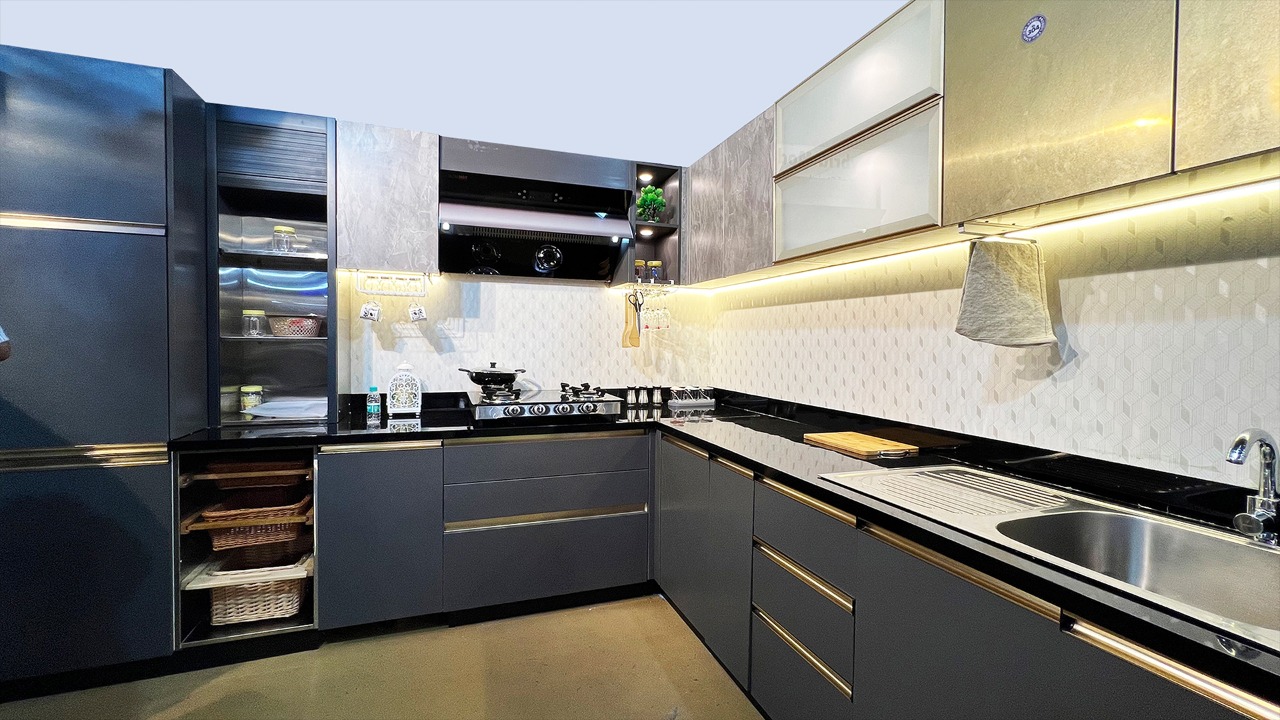Renovating Your Kitchen? Avoid These Common (and Costly) Mistakes

Admin

Picture this: you’re standing in your brand-new kitchen. The tiles shine, the cabinets gleam, the chimney hums quietly… and then it happens.
Your drawer doesn’t close properly. The laminate starts to bubble. A strange smell lingers after cooking fish curry.
Sound familiar? That’s the reality for thousands of homeowners who rush into kitchen makeovers without knowing the hidden traps.
If you’re about to spend hard-earned money on a kitchen renovation, here’s the unfiltered truth that will save you from regret (and repair bills).
1. Choosing Materials That Can’t Handle Indian Cooking
Indian kitchens work hard. We fry, we steam, we spice — and our food is loaded with colour, aroma, and oil. Materials like plywood, MDF, or even high-end laminates can warp, swell, stain, or absorb smells over time.
Smart move: Go for materials like Alloy-Coated Steel (ACS) or Stainless Steel. They’re non-porous, stain-resistant, waterproof, and easy to clean — even after years of heavy cooking.
2. Ignoring the Climate Factor
Humidity, heat, and coastal air can destroy certain kitchen materials faster than you think. In cities like Mumbai, Kochi, or Chennai, wood-based kitchens often swell, crack, or grow mold in just a few seasons.
Smart move: Opt for materials that don’t absorb moisture and can handle your city’s climate year-round. Steel kitchens remain perfectly aligned whether it’s peak monsoon or dry summer.
3. Skipping Proper Storage Planning
A beautiful kitchen means nothing if you’re constantly short on space. Many people focus only on looks and forget to plan for efficient storage — leading to cluttered counters and overflowing cabinets.
Smart move: Think modular. Plan drawers, pull-outs, corner units, and vertical storage so every inch is used wisely.
4. Overlooking Ventilation
Strong Indian spices, frying oils, and tadkas can leave lingering smells and grease marks on walls and ceilings. Poor ventilation only makes it worse.
Smart move: Install a high-quality chimney or exhaust system and position it well. Combine it with easy-to-clean surfaces to keep your kitchen fresh.
5. Following Trends Blindly
Matte black finishes, open shelving, or ultra-minimalist designs might look great on Instagram, but they’re not always practical for Indian cooking styles. Open shelves collect dust and grease fast, while certain trendy finishes are tough to maintain.
Smart move: Pick a design that balances style with functionality — one that still looks stunning after years of daily use.
6. Compromising on Quality to Save Costs
Cheap hinges, low-grade laminates, and budget cabinets might save you money today, but you’ll end up spending more on repairs and replacements later.
Smart move: Invest in quality hardware, sturdy materials, and expert installation. A kitchen is a long-term investment, not a short-term expense.
7. Forgetting the “Work Triangle” Rule
The distance between your stove, sink, and fridge can make or break your cooking experience. Poor layouts mean more walking, less efficiency, and constant back-and-forth during cooking.
Smart move: Design your kitchen so these three points form a smooth, easy-to-reach triangle. It’ll save you time, effort, and energy.
The Tusker Way: Kitchens Made for Real Life
Your kitchen should match your lifestyle — not fight it. At Tusker Kitchens, we use Alloy-Coated Steel and Stainless Steel to create kitchens that are termite-proof, waterproof, stain-resistant, and built to last over 25 years with minimal maintenance.
From smart storage to climate-proof materials, every detail is designed for the way Indian families actually cook and live.
Don’t let common mistakes ruin your dream kitchen. Plan smart, choose the right materials, and invest in durability. That way, your kitchen will keep looking and performing like new — long after the renovation dust settles.
WhatsApp us
